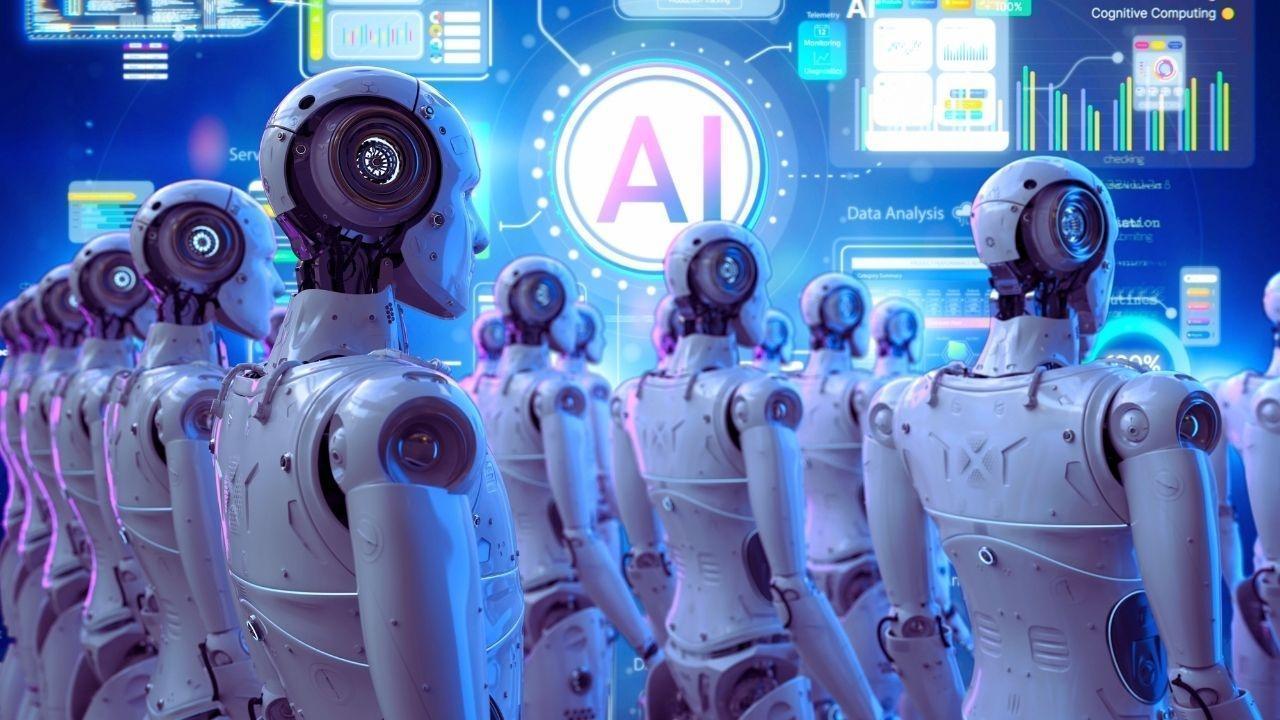
Post by : Anees Nasser
For years, the synergy between artificial intelligence and robotics has been a focal point in research. However, many breakthroughs were previously restricted to laboratory environments. Now, as AI merges with cutting-edge sensors and robust hardware, autonomous systems are stepping beyond these confines, capable of functioning in unpredictable real-world contexts.
Today's autonomous robots are no longer just machines; they possess the ability to perceive, reason, and react. With the implementation of AI algorithms that learn from experiences, these robots can comprehend their surroundings, make sophisticated choices, and adjust to unforeseen circumstances. This pivotal transition represents a landmark achievement in the evolution of robotics.
A variety of technological advancements are facilitating the emergence of autonomous robots in working environments:
Next-Gen AI Algorithms: State-of-the-art deep learning, reinforcement learning, and computer vision techniques empower robots to discern objects, anticipate human movements, and make decisions instantly.
Sensor Integration: Advanced technologies like Lidar, radar, and high-resolution cameras allow robots to visualize their surroundings in three-dimensional space, detect obstacles, and navigate safely.
Edge Computing: Localized data processing enables robots to make immediate decisions without depending on distant servers, crucial for timely tasks.
Battery and Energy Solutions: Advanced power systems and dense energy batteries extend operational hours, allowing for prolonged tasks in the field.
These innovations empower robots to take on responsibilities previously requiring human intervention, decreasing errors and enhancing efficiency.
Industrial automation has been a primary domain for autonomous robotics. AI-enhanced machines now oversee intricate assembly lines, coordinate seamlessly with other equipment, and modify workflows using real-time information. In logistics, autonomous robots enhance warehouse functions by efficiently moving goods, monitoring inventories, and optimizing storage configurations.
Unlike conventional robotic arms limited to repetitive actions, AI-driven systems possess the ability to continuously learn. They can identify defective items, accommodate different product sizes, and navigate shifting warehouse layouts, leading to reduced downtime and heightened overall productivity—an evident advantage over previous automation methods.
The healthcare sector is witnessing notable advances with the use of autonomous robots. AI-backed surgical robots assist with precision, minimizing risks and enhancing patient care. Beyond the operating room, robots perform repetitive yet essential functions such as medication distribution, sanitation, and patient monitoring.
In elderly care and rehabilitation, these robots offer critical mobility assistance, remind patients about medications, and monitor health indicators. By blending robotics with AI, healthcare institutions can deliver safer, more efficient, and tailored services—especially in scenarios with staff shortages.
Farming has traditionally demanded extensive labor, but autonomous robots are now redefining agriculture through precision techniques. AI-enhanced machines can plant crops, assess crop health, identify pests, and optimize irrigation practices. Drones equipped with intelligent vision systems can survey vast agricultural areas, supplying timely data for yield forecasting and disease detection.
Such systems not only boost productivity but also minimize wastage. By transitioning to data-informed practices, autonomous robots promote sustainability, enabling farmers to make well-informed decisions with decreased reliance on manual labor.
The domain of ground and aerial autonomous vehicles exemplifies the application of robotics and AI beyond the laboratory. From self-driving vehicles to delivery drones, these solutions utilize AI for navigation, obstacle recognition, and adherence to traffic regulations.
Although challenges regarding regulations and safety persist, these vehicles exhibit how robotics can function reliably in intricate scenarios. Their integration with smart city infrastructures and AI-driven traffic systems enhances overall efficiency while alleviating congestion, underlining the expansive promise of autonomous mobility.
Despite notable advancements, the practical deployment of autonomous robots continues to face various hurdles:
Environmental Complexities: Robots must contend with unpredictable weather patterns, uneven terrains, and dynamic interactions with humans.
Safety and Dependability: It’s paramount that AI systems deliver secure real-time decisions, particularly in high-stakes situations.
Data and Learning Challenges: These systems heavily depend on vast data sets for optimal learning, making the quality of input data critical to performance.
Ethical and Societal Issues: As robots gain autonomy in public and private domains, issues surrounding privacy, job displacement, and accountability must be addressed.
Confronting these issues calls for a united effort among engineers, policymakers, and ethicists to craft safe, socially responsible autonomous systems.
The coming decade heralds remarkable advancement in AI-driven autonomous systems. Progress in machine learning, robotics hardware, and user-robot interactions will empower these robots to engage in increasingly complex tasks across diverse industries. Collaborative robots—referred to as “cobots”—will complement human expertise rather than supplant it.
Future robots will also exhibit enhanced adaptability. Consistently learning from real-world scenarios will allow them to refine their efficiencies over time, rendering them more reliable and versatile. By incorporating both cloud computing and edge AI, groups of robots will communicate and learn collectively, propelling intelligence and efficiency.
As robots transition from laboratory settings to field applications, society must grapple with the wider ramifications:
Job Market Transformation: Automation will change job roles, highlighting the need for skills in robotics management, AI oversight, and technical support rather than manual tasks.
Regulatory Developments: Governments must establish regulations regarding safety, responsibility, and data management for autonomous systems operating in public venues.
Ethical Approaches: Transparency in algorithms and fairness in decision processes will be vital to fostering public confidence in AI-driven robotics.
Equitable Access: Ensuring that robotic technology is accessible will help mitigate disparities between larger and smaller enterprises.
Understanding these aspects is crucial for maximizing the societal benefits of autonomous robots while minimizing potential risks.
Autonomous robotics have evolved beyond a mere experimental phase. Enabled by AI, these systems are increasingly being integrated into manufacturing, healthcare, agriculture, logistics, and even in daily life, transforming industries and society at large. Their ability to learn, adapt, and function effectively in complex environments signifies robust potential.
While there are still challenges to overcome—including ethical dilemmas, safety concerns, and technological constraints—the momentum towards deploying autonomous robots in varied fields is evident. We are entering a future where human-robot collaboration will be defined by efficiency, intelligence, and deeper connections.
This article serves informational purposes only. It offers insights into current trends and applications of autonomous robotics and AI, without providing professional, legal, or technical advice. Readers should consult experts or primary sources for specific guidance.










NBA Friday Recap: Powerhouse Wins for Miami, LA, Milwaukee, and Clippers
Miami, LA Lakers, Milwaukee, and Clippers triumphed in a thrilling NBA Friday, showcasing standout p

Doncic Shines with 49 Points in Lakers' 128-110 Victory over Timberwolves
Luka Doncic dazzles with 49 points as the Lakers secure a 128-110 win against the Timberwolves, show

Kings Triumph Over Jazz 105-104 with Last-Minute Sabonis Effort
The Sacramento Kings edged out the Utah Jazz 105-104, with Domantas Sabonis making the decisive shot

Argentina's Friendly Match Against India Delayed, New Date to be Announced
The friendly match between Argentina and India in Kochi has been postponed due to FIFA approval dela

Rohit and Kohli Conclude ODI Journeys in Australia with a Victory
Rohit Sharma and Virat Kohli bid adieu to Australian ODIs with a final win, forming a 168-run partne

George Russell's Wrestling Mask Antics at Mexican Grand Prix
George Russell donned a wrestling mask to enjoy the Mexican Grand Prix from the stands, providing a